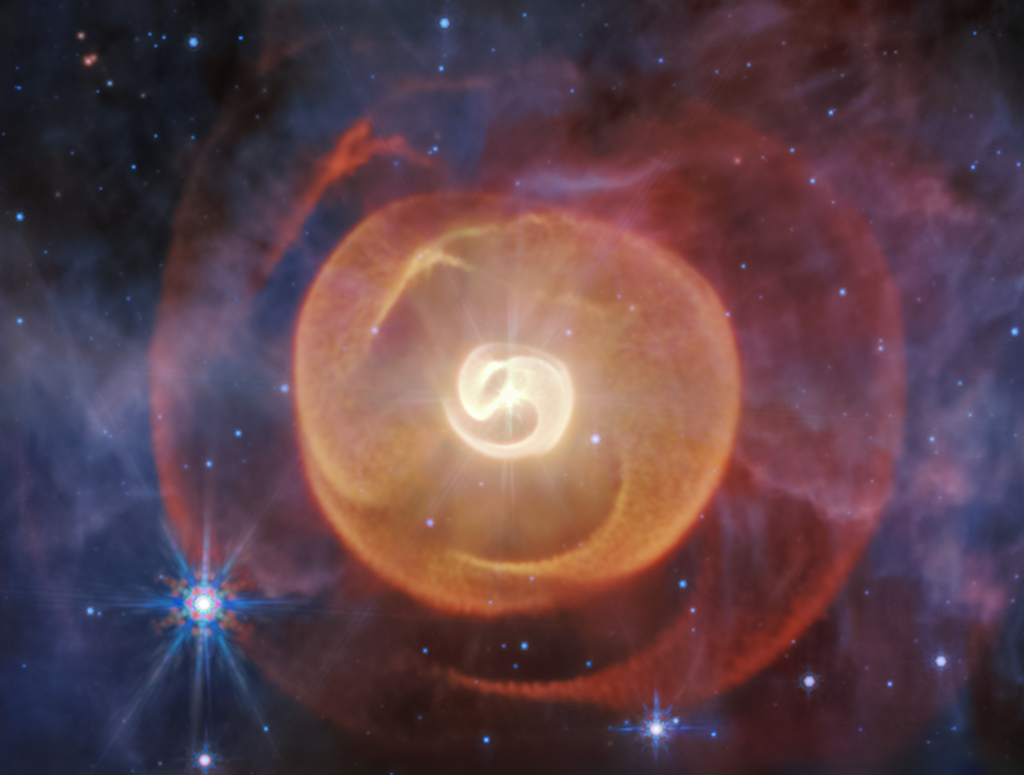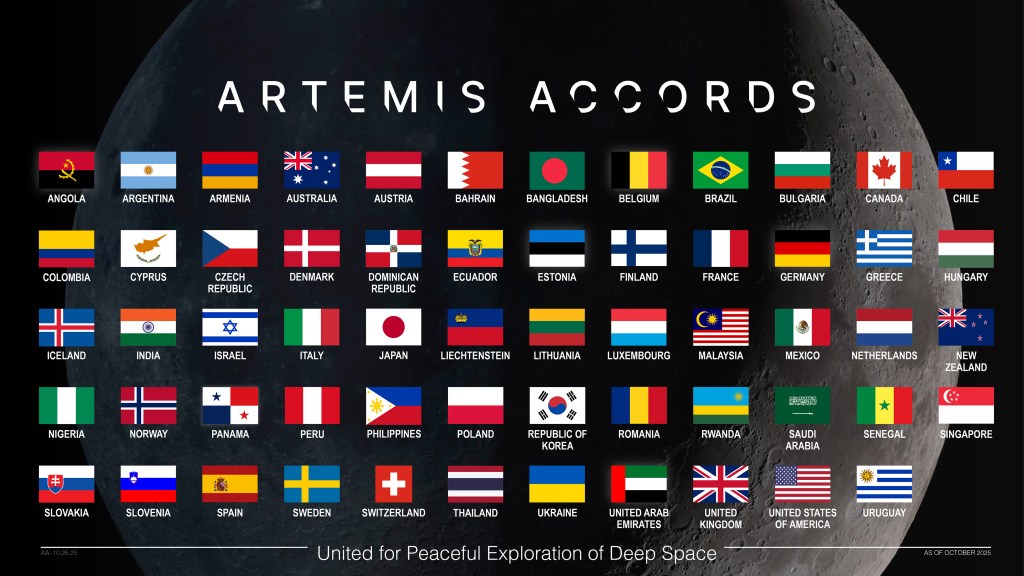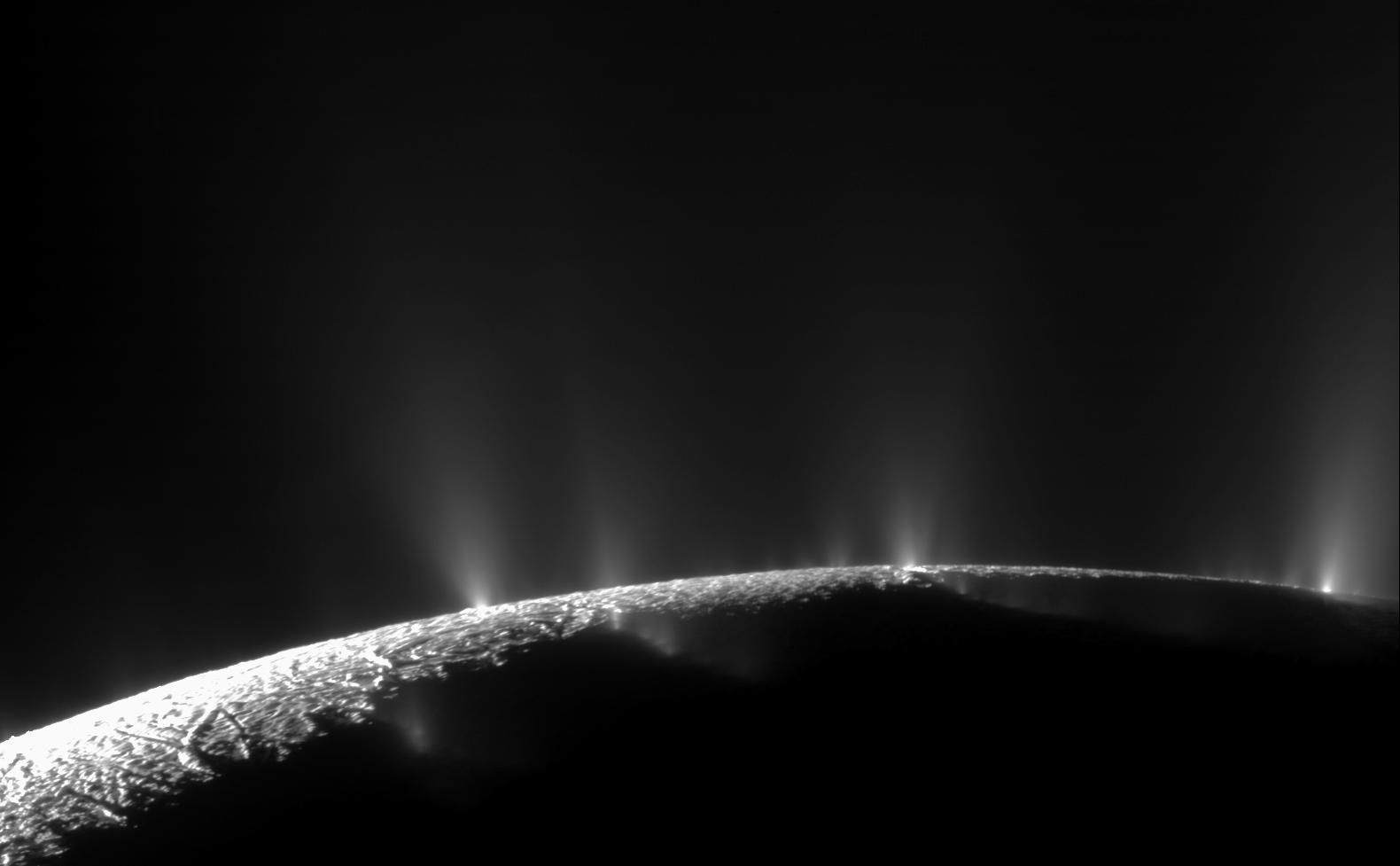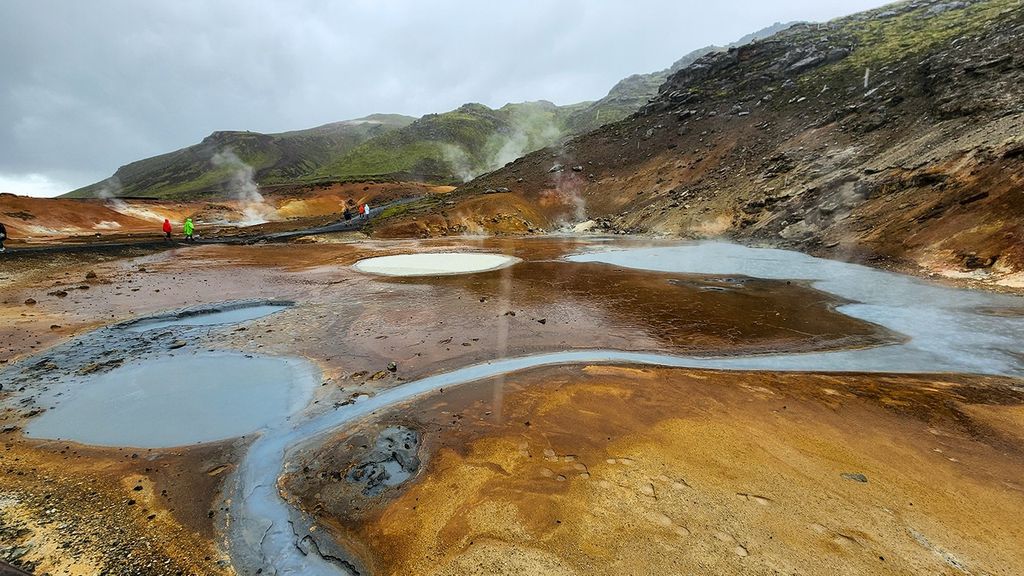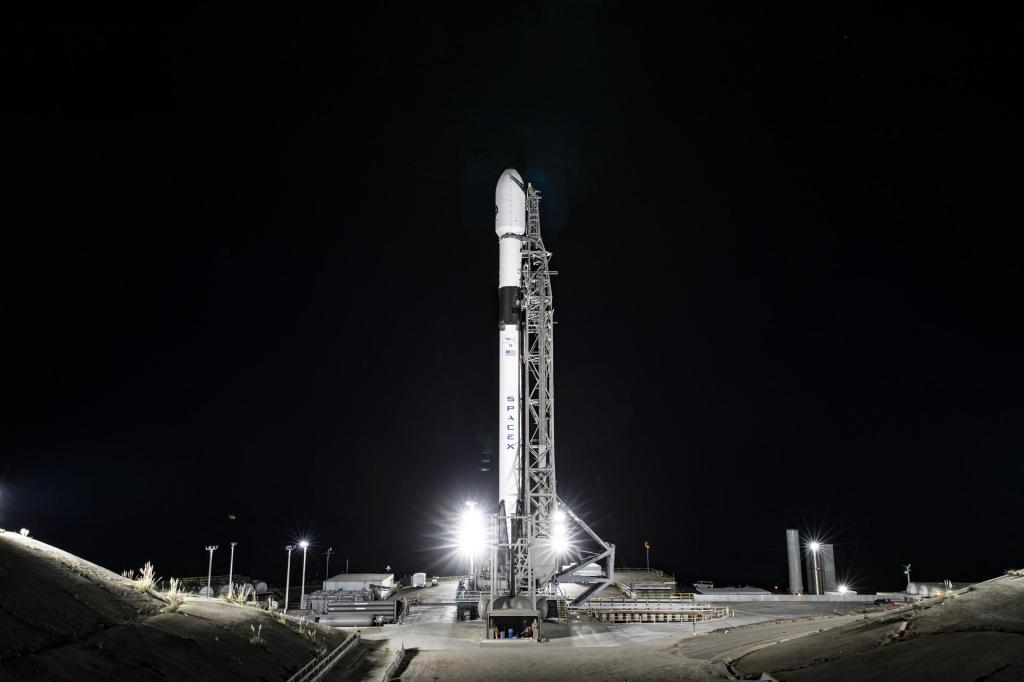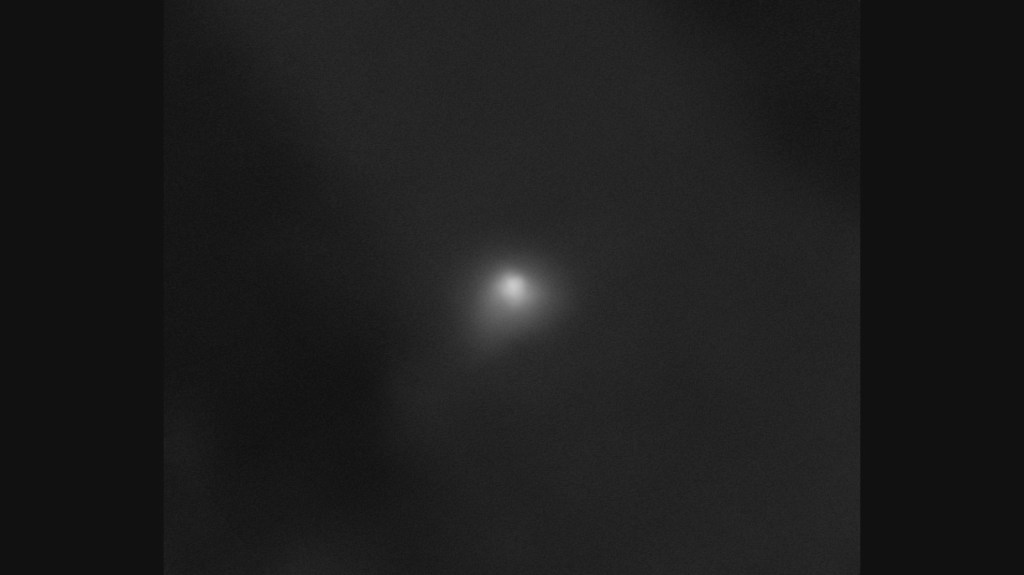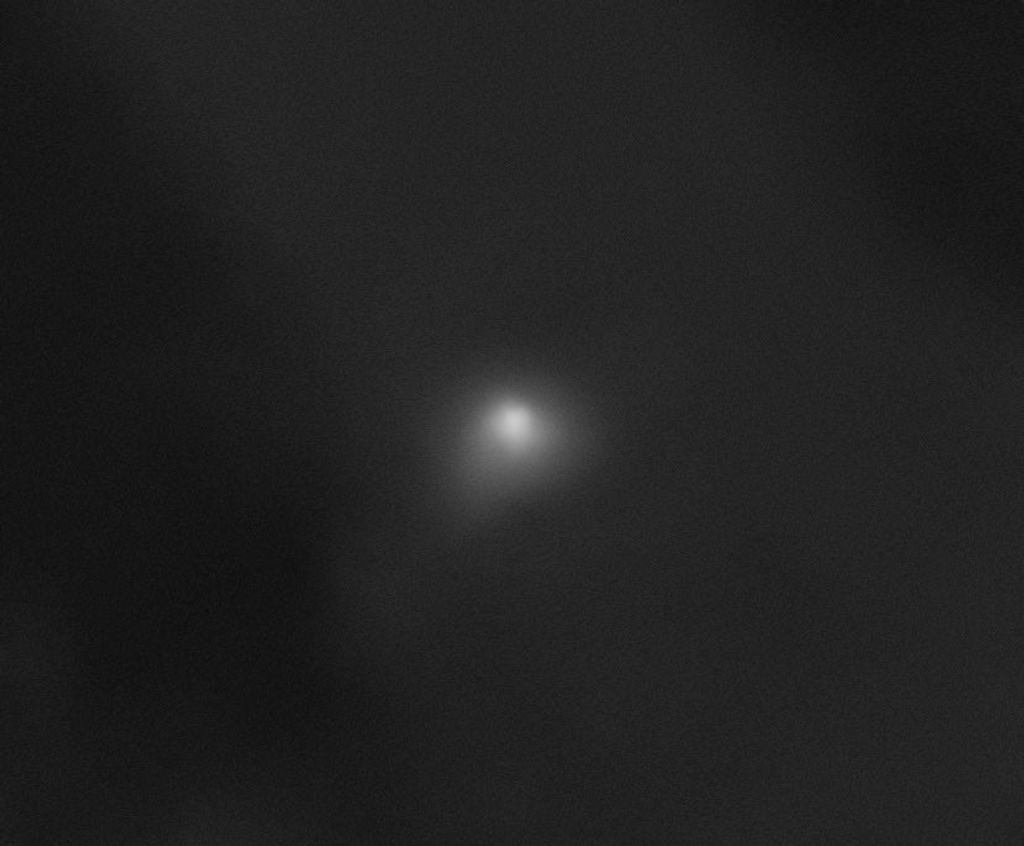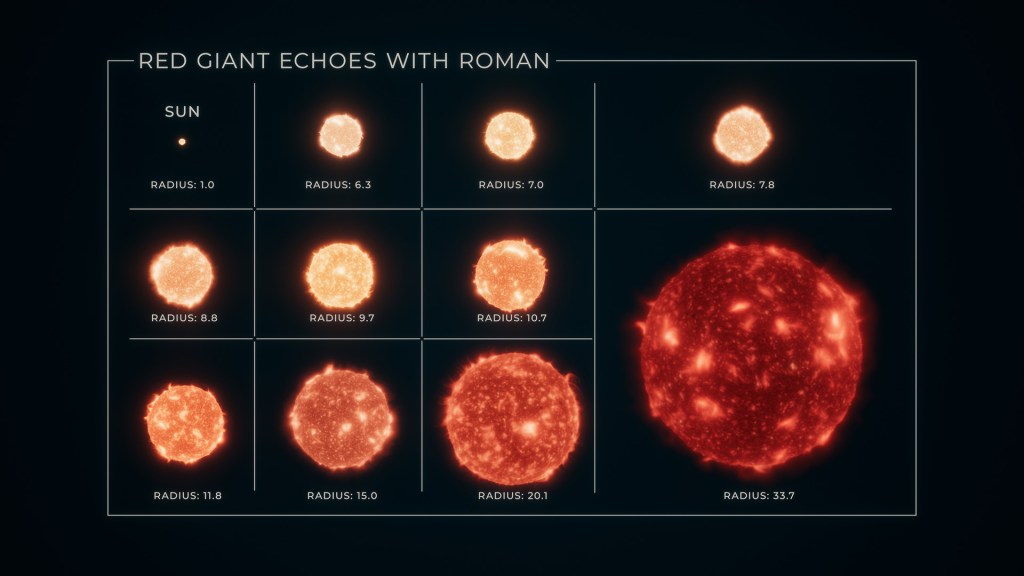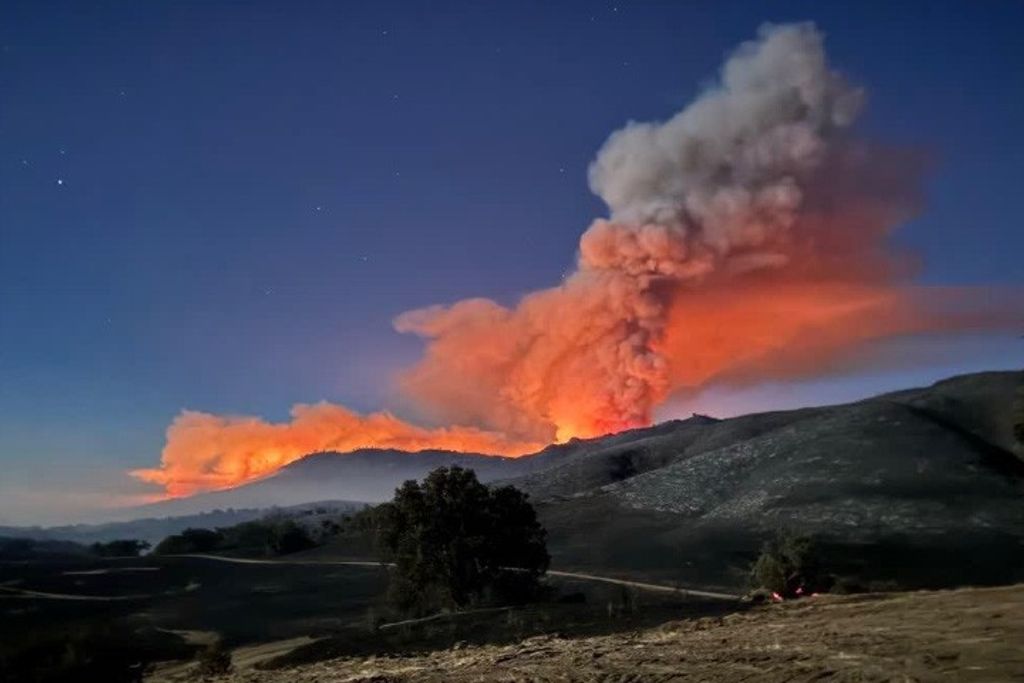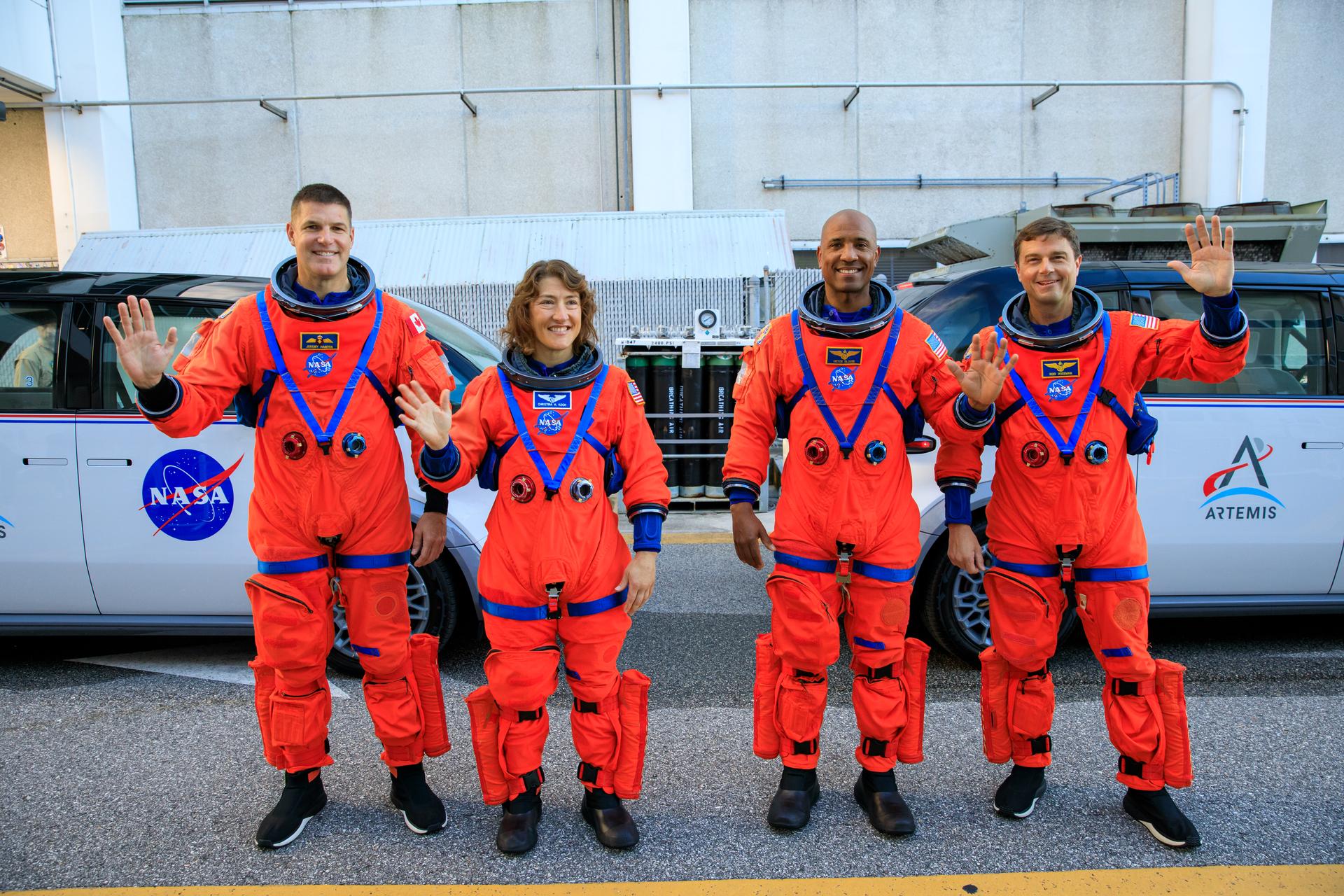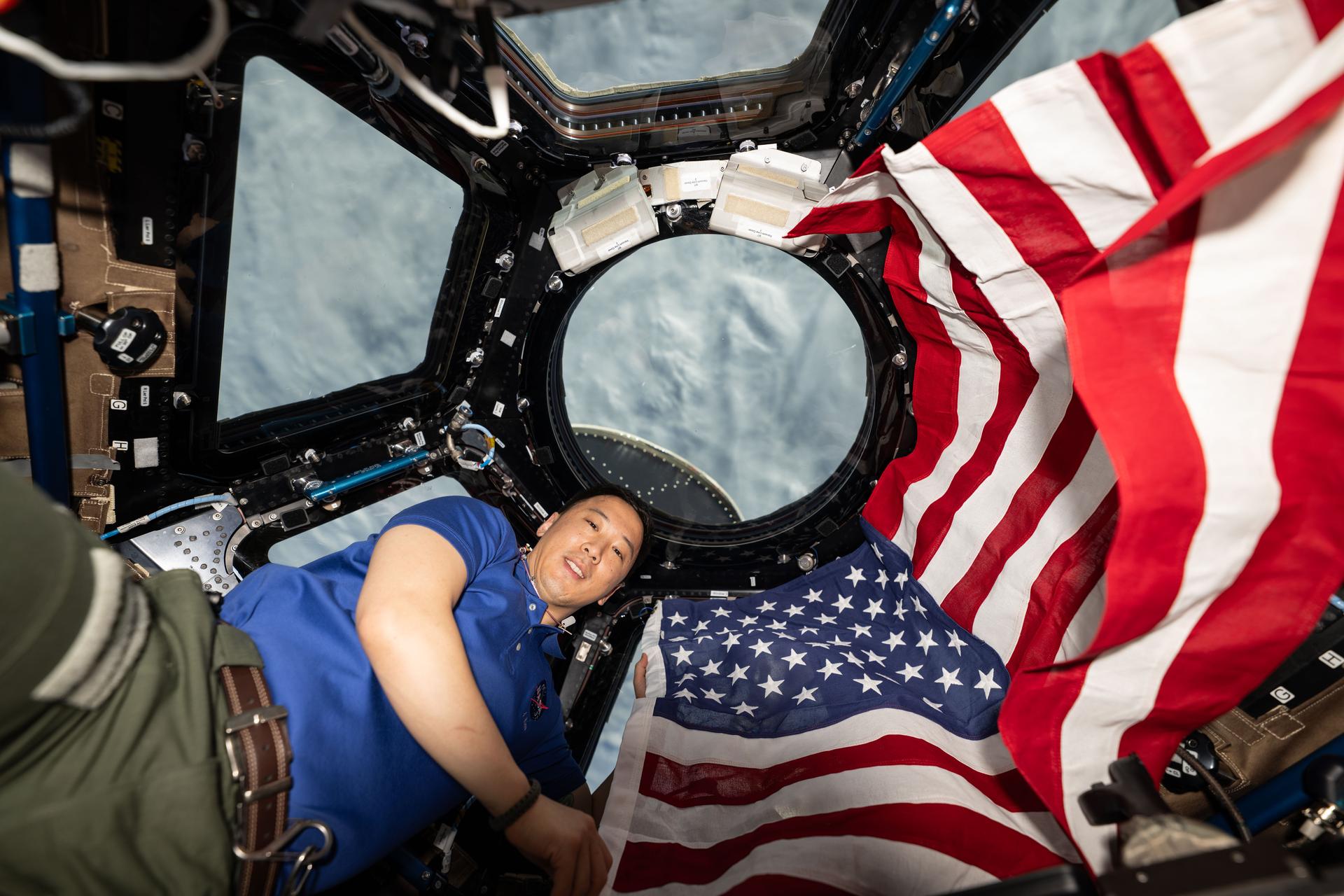1 min read
The Trifid Nebula: Stellar Nursery Torn Apart By Radiation From Nearby Star

This NASA Hubble Space Telescope image of the Trifid Nebula reveals a stellar nursery being torn apart by radiation from a nearby, massive star. The picture also provides a peek at embryonic stars forming within an ill-fated cloud of dust and gas, which is destined to be eaten away by the glare from the massive neighbor. This stellar activity is a beautiful example of how the life cycles of stars like our Sun is intimately connected with their more powerful siblings.
The Hubble image shows a small part of a dense cloud of dust and gas, a stellar nursery full of embryonic stars. This cloud is about 8 light-years away from the nebula's central star, which is beyond the top of this picture. Located about 9,000 light-years from Earth, the Trifid resides in the constellation Sagittarius.
A stellar jet [the thin, wispy object pointing to the upper left] protrudes from the head of a dense cloud and extends three-quarters of a light-year into the nebula. The jet's source is a very young stellar object that lies buried within the cloud. Jets such as this are the exhaust gases of star formation. Radiation from the massive star at the center of the nebula is making the gas in the jet glow, just as it causes the rest of the nebula to glow.
The jet in the Trifid is a "ticker tape," telling the history of one particular young stellar object that is continuing to grow as its gravity draws in gas from its surroundings. But this particular ticker tape will not run for much longer. Within the next 10,000 years the glare from the central, massive star will continue to erode the nebula, overrunning the forming star, and bringing its growth to an abrupt and possibly premature end.
Another nearby star may have already faced this fate. The Hubble picture shows a "stalk" [the finger-like object] pointing from the head of the dense cloud directly toward the star that powers the Trifid. This stalk is a prominent example of the evaporating gaseous globules, or "EGGs," that were seen previously in the Eagle Nebula, another star-forming region photographed by Hubble. The stalk has survived because at its tip there is a knot of gas that is dense enough to resist being eaten away by the powerful radiation.
Reflected starlight at the tip of the EGG may be due to light from the Trifid's central star, or from a young stellar object buried within the EGG. Similarly, a tiny spike of emission pointing outward from the EGG looks like a small stellar jet. Hubble astronomers are tentatively interpreting this jet as the last gasp from a star that was cut off from its supply lines 100,000 years ago.
The images were taken Sept. 8, 1997 through filters that isolate emission from hydrogen atoms, ionized sulfur atoms, and doubly ionized oxygen atoms. The images were combined in a single color composite picture. While the resulting picture is not true color, it is suggestive of what a human eye might see.
About the Object
- R.A. PositionR.A. PositionRight ascension – analogous to longitude – is one component of an object's position.18h 2m 22.99s
- Dec. PositionDec. PositionDeclination – analogous to latitude – is one component of an object's position.-23° 1' 48.0"
- ConstellationConstellationOne of 88 recognized regions of the celestial sphere in which the object appears.Sagittarius
- DistanceDistanceThe physical distance from Earth to the astronomical object. Distances within our solar system are usually measured in Astronomical Units (AU). Distances between stars are usually measured in light-years. Interstellar distances can also be measured in parsecs.Approximately 9,000 light-years (2800 parsecs)
- DimensionsDimensionsThe physical size of the object or the apparent angle it subtends on the sky.This image is roughly 2.5 arcminutes (6.6 light-years or 2.0 parsecs) wide.
About the Data
- Data DescriptionData DescriptionProposal: A description of the observations, their scientific justification, and the links to the data available in the science archive.
Science Team: The astronomers who planned the observations and analyzed the data. "PI" refers to the Principal Investigator.This image was created from HST data from the following proposal, 6857: J. Trauger (JPL), C. Burrows (STScI), J. Clarke (U. Michigan), D. Crisp (JPL), J. Hoessel and J. Gallagher (U. Wisconsin-Madison), R. Griffiths (JHU), J. Hester (ASU), J. Holtzman (Lowell Obs.), J. Mould (Mt. Stromlo and Siding Spring Obs.), J. Westphal (Caltech).
- InstrumentInstrumentThe science instrument used to produce the data.HST>WFPC2
- Exposure DatesExposure DatesThe date(s) that the telescope made its observations and the total exposure time.September 8, 1997, Exposure Time: 4.1 hours
- FiltersFiltersThe camera filters that were used in the science observations.F502N ([O III]), F547M (Strömgren y), F656N (H-alpha), F673N ([S II])
- Object NameObject NameA name or catalog number that astronomers use to identify an astronomical object.Trifid Nebula, M20, NGC 6514
- Object DescriptionObject DescriptionThe type of astronomical object.Emission Nebula; HII Region
- Release DateNovember 9, 1999
- Science ReleaseThe Trifid Nebula: Stellar Sibling Rivalry
- CreditNASA and Jeff Hester (Arizona State University)

Related Images & Videos
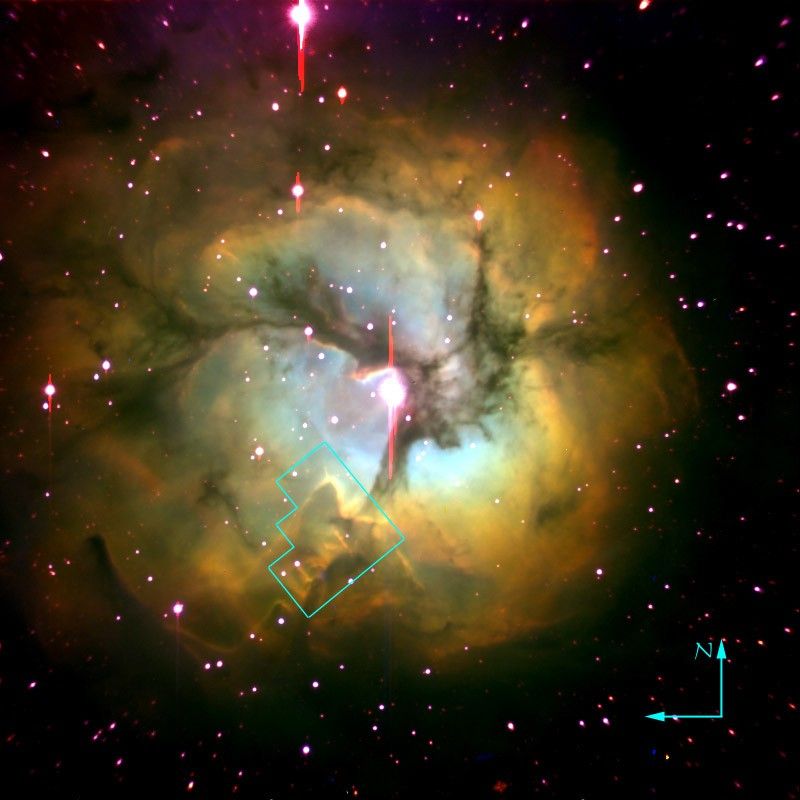
Star Birth in the Trifid Nebula
HUBBLE IDENTIFIES SOURCE OF ULTRAVIOLET LIGHT IN AN OLD GALAXY Video File October 26, 1999 Contents 1) VIDEO ZOOM INTO M32: Video sequence begins with a ground-based image of M32 (seen just above the large central galaxy M31), ZOOM to ground-based image of M32, continue the...
Share
Details
Claire Andreoli
NASA’s Goddard Space Flight Center
Greenbelt, Maryland
claire.andreoli@nasa.gov

